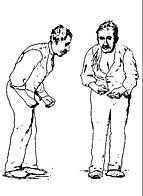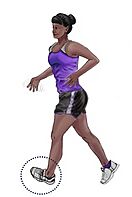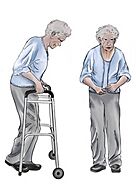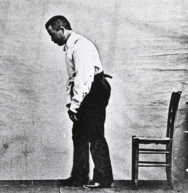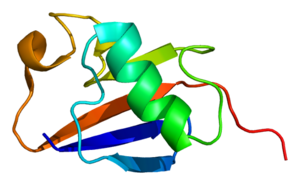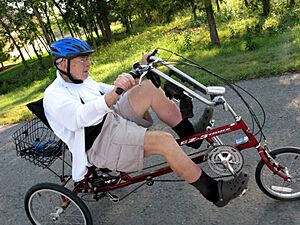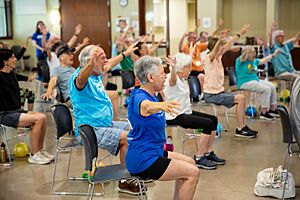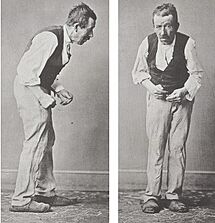Parkinson's disease facts for kids
Quick facts for kids Parkinson's disease |
|
|---|---|
|
A. 1880s illustration of Parkinson's disease (PD)
B. Mild motor-predominant PD
C. Intermediate PD
D. Diffuse malignant PD
|
|
| Classification and external resources | |
| Synonyms |
|
| Specialty | Lua error in Module:Wikidata at line 70: attempt to index field 'wikibase' (a nil value). |
| Patient UK | Parkinson's disease |
Parkinson's disease (PD), or simply Parkinson's, is a long-term condition that affects the central nervous system, especially the brain. It mainly causes problems with movement, but it can also affect a person's mood, sleep, and thinking.
Symptoms usually start slowly and get worse over time. The most common movement-related symptoms are shaking (called a tremor), slowness of movement, stiff muscles, and trouble with balance. Other problems, like difficulty sleeping or feeling sad, can also happen.
Parkinson's disease happens when nerve cells in a part of the brain called the substantia nigra begin to stop working properly. These cells produce a very important chemical called dopamine. Dopamine acts like a messenger in the brain, helping to control movement. When there isn't enough dopamine, it becomes hard for a person to control their muscles and move smoothly.
Doctors usually diagnose Parkinson's by examining a person and looking at their symptoms. There is no cure for the disease, but treatments can help manage the symptoms. The main treatment is medication that helps increase the amount of dopamine in the brain. Physical therapy and exercise are also very important to help people stay active and mobile.
Parkinson's usually affects people over the age of 60, but it can sometimes start in younger people.
Signs and symptoms
People with Parkinson's disease can have a wide range of symptoms, which are often divided into two groups: motor (related to movement) and non-motor.
Motor symptoms
The four main motor symptoms of Parkinson's are:
- Tremor: This is an uncontrollable shaking that usually starts in one hand or arm when the person is resting. A common type is the "pill-rolling" tremor, where the thumb and index finger move back and forth.
- Bradykinesia: This means "slowness of movement." People with Parkinson's may find it hard to start moving, and their movements can be slow and small. This can affect walking, writing, and even facial expressions, leading to a "mask-like" face.
- Rigidity: This means stiffness in the muscles. The arms, legs, or neck can feel tight and hard to move.
- Postural instability: This is a problem with balance. As the disease gets worse, people may have trouble standing straight and may fall more easily. This often leads to a stooped or hunched posture.
Other motor symptoms can include a shuffling walk, trouble with speech (becoming soft or slurred), and difficulty with handwriting, which often becomes very small.
Non-motor symptoms
Parkinson's is not just a movement disorder. It can cause many other problems that are not related to movement. These can be just as challenging as the motor symptoms.
- Mood changes: It is common for people with Parkinson's to experience depression, anxiety, or a lack of interest in activities (apathy).
- Cognitive problems: This includes issues with memory, attention, and problem-solving. Some people may develop dementia in the later stages of the disease.
- Sleep problems: Many people with Parkinson's have trouble sleeping. This can include difficulty falling asleep, waking up often during the night, or acting out dreams.
- Other issues: A reduced sense of smell is a very common early sign. Other problems can include constipation, excessive sweating, and fatigue (feeling very tired).
Causes
Scientists are still working to understand the exact cause of Parkinson's disease. In most cases, the cause is unknown, which is called idiopathic Parkinson's. It is believed to be caused by a combination of genetic and environmental factors.
- Genetics: In about 5-10% of cases, Parkinson's runs in families. Scientists have found specific genes that can increase the risk of developing the disease. However, having one of these genes does not mean a person will definitely get Parkinson's.
- Environmental factors: Research suggests that exposure to certain things in the environment may increase the risk of Parkinson's. For example, long-term exposure to some pesticides and herbicides has been linked to a higher risk. Head injuries may also increase the risk.
- Loss of dopamine: The symptoms of Parkinson's appear because of the loss of nerve cells in the substantia nigra, a part of the midbrain. These cells produce dopamine, a chemical that sends signals to help coordinate movement. By the time motor symptoms appear, a person has already lost 50-80% of these dopamine-producing cells.
Diagnosis
There is no single test to diagnose Parkinson's disease. A doctor, usually a neurologist (a brain specialist), will make a diagnosis based on a person's medical history and a careful physical examination.
The doctor will look for the main motor symptoms, such as tremor, stiffness, and slowness of movement. They may ask the person to perform certain tasks, like walking, tapping their fingers, or writing.
Sometimes, a doctor might order a brain scan, such as an MRI or a DaTscan. These scans cannot diagnose Parkinson's directly, but they can help rule out other conditions that might be causing the symptoms, like a stroke or a brain tumor. A diagnosis is often confirmed if a person's symptoms improve after taking Parkinson's medication.
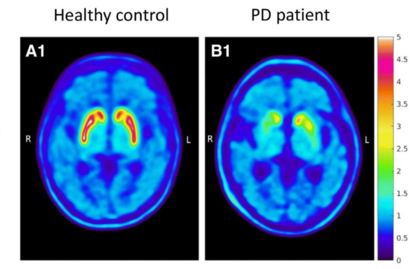
Management and treatment
There is currently no cure for Parkinson's disease. Treatment focuses on managing the symptoms to help people live as full and active a life as possible.
Medications
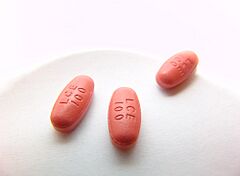
Medications are the main way to treat the motor symptoms of Parkinson's.
- Levodopa: This is the most effective and widely used medication. The body converts levodopa into dopamine, which helps replace the missing chemical in the brain. It is often combined with another drug called carbidopa to reduce side effects like nausea.
- Dopamine agonists: These drugs mimic the effects of dopamine in the brain. They are not as strong as levodopa but can be used in the early stages or along with levodopa in later stages.
- MAO-B inhibitors: These medications help prevent the breakdown of dopamine in the brain, which means the dopamine that is available can be used for longer.
Therapies and exercise
Rehabilitation and exercise are very important parts of managing Parkinson's.
- Physical therapy: A physical therapist can help with balance, strength, and flexibility. They can teach exercises to make walking easier and reduce the risk of falls.
- Speech therapy: A speech therapist can help with problems like soft or slurred speech.
- Occupational therapy: An occupational therapist helps people find ways to continue doing daily activities, such as dressing, cooking, and working.
- Exercise: Regular exercise is one of the most important things a person with Parkinson's can do. Activities like walking, swimming, dancing, and tai chi can improve mobility, balance, and mood.
Surgery
For some people with advanced Parkinson's whose symptoms are not controlled well by medication, a type of surgery called deep brain stimulation (DBS) may be an option.
In DBS, a surgeon places thin wires called electrodes into specific areas of the brain. These electrodes are connected to a small device, similar to a pacemaker, that is placed under the skin in the chest. The device sends electrical pulses to the brain, which can help control tremors, stiffness, and slowness.
Diet and lifestyle
A healthy diet is important for everyone, but it can be especially helpful for people with Parkinson's. Eating a balanced diet with plenty of fruits, vegetables, and fiber can help with constipation, which is a common problem. Drinking plenty of water is also important.
Some people find that protein (found in meat, fish, and dairy) can interfere with how well levodopa works. A doctor or dietitian may suggest taking the medication about 30 minutes before a meal.
History
Although symptoms of Parkinson's were described in ancient texts, the first detailed medical description was written in 1817 by an English doctor named James Parkinson. He published a small book called An Essay on the Shaking Palsy, where he described six people he had observed with the condition. He noted the tremor, stooped posture, and walking problems.
For many years, the condition was called "shaking palsy." In the 1870s, a famous French neurologist named Jean-Martin Charcot made further important observations about the disease. He was the one who suggested naming it "Parkinson's disease" in honor of James Parkinson.
In the 20th century, scientists discovered that the disease was caused by a lack of dopamine in the brain. This discovery led to the development of levodopa in the 1960s, which is still the most important treatment for Parkinson's today.
Society and culture
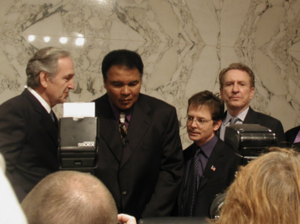
Public awareness of Parkinson's disease has grown thanks to several famous people who have shared their experiences with the condition.
- Actor Michael J. Fox was diagnosed with early-onset Parkinson's at the age of 29. He has become a powerful advocate for people with the disease. In 2000, he started The Michael J. Fox Foundation, which has raised over $2 billion for Parkinson's research.
- Boxer Muhammad Ali, one of the most famous athletes in history, was diagnosed with Parkinson's at age 42. His public battle with the disease brought a great deal of attention to the condition.
Many organizations around the world work to support people with Parkinson's and their families. They provide information, fund research, and advocate for better care. World Parkinson's Day is observed on April 11, the birthday of James Parkinson. The symbol for Parkinson's awareness is a red tulip.
Research
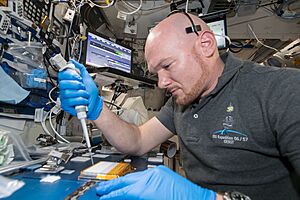
Scientists and doctors are working hard to find better treatments and a cure for Parkinson's disease. Research is focused on several key areas:
- Understanding the causes: Researchers are studying genetics and environmental factors to learn why nerve cells in the brain stop working.
- New treatments: Scientists are developing new drugs that could slow or stop the progression of the disease, not just treat the symptoms.
- Stem cell therapy: Researchers are exploring whether healthy new dopamine-producing cells, grown from stem cells, can be transplanted into the brain to replace the ones that have been lost.
- Gene therapy: This involves using harmless viruses to deliver helpful genes into brain cells to protect them or help them function better.
These are promising areas of research that give hope for a future where Parkinson's disease can be slowed, stopped, or even prevented.
See also
 In Spanish: Enfermedad de Parkinson para niños
In Spanish: Enfermedad de Parkinson para niños
- Neuroinflammation
- Innate immune system


